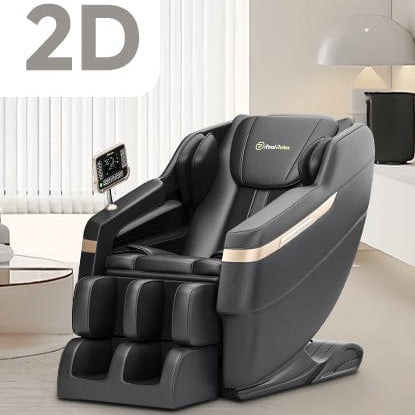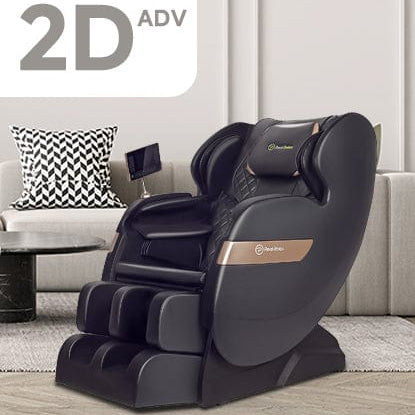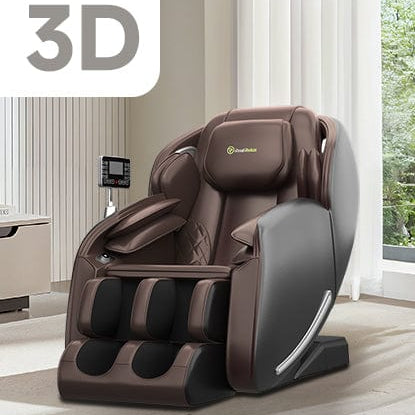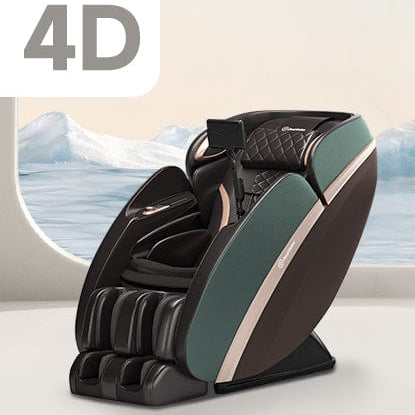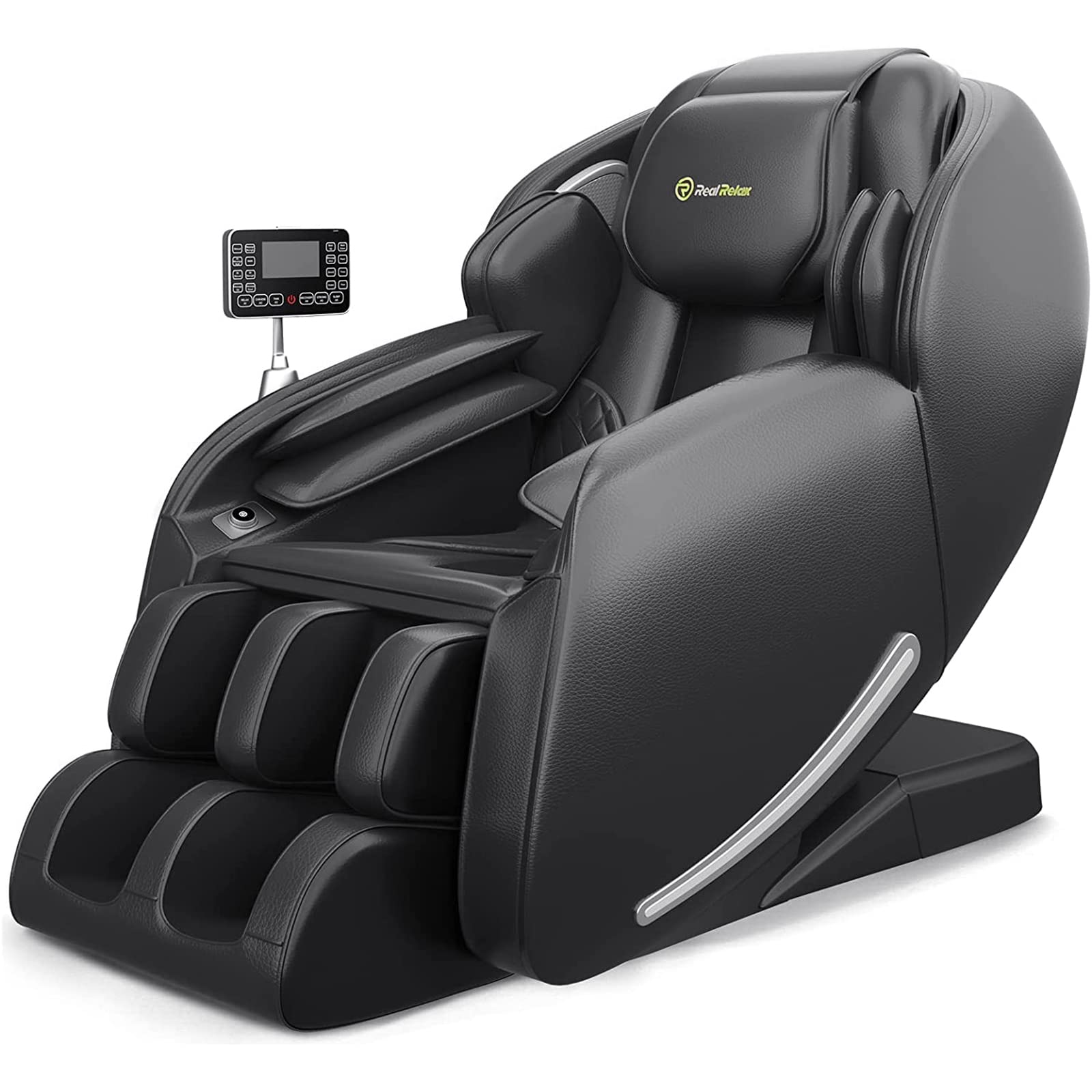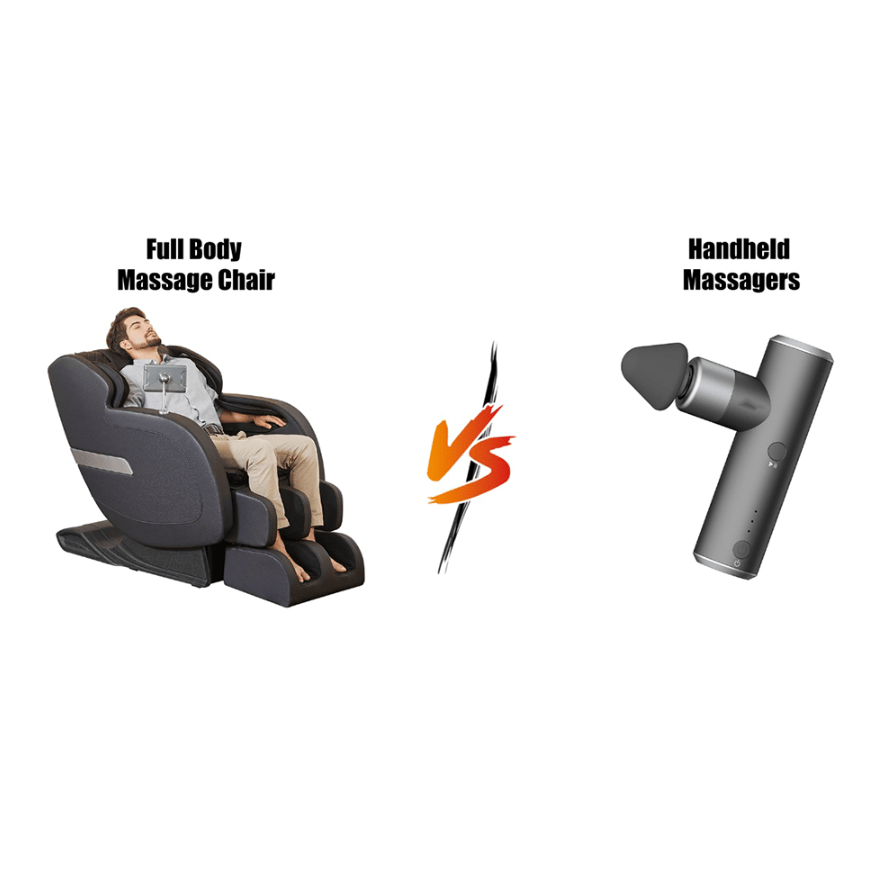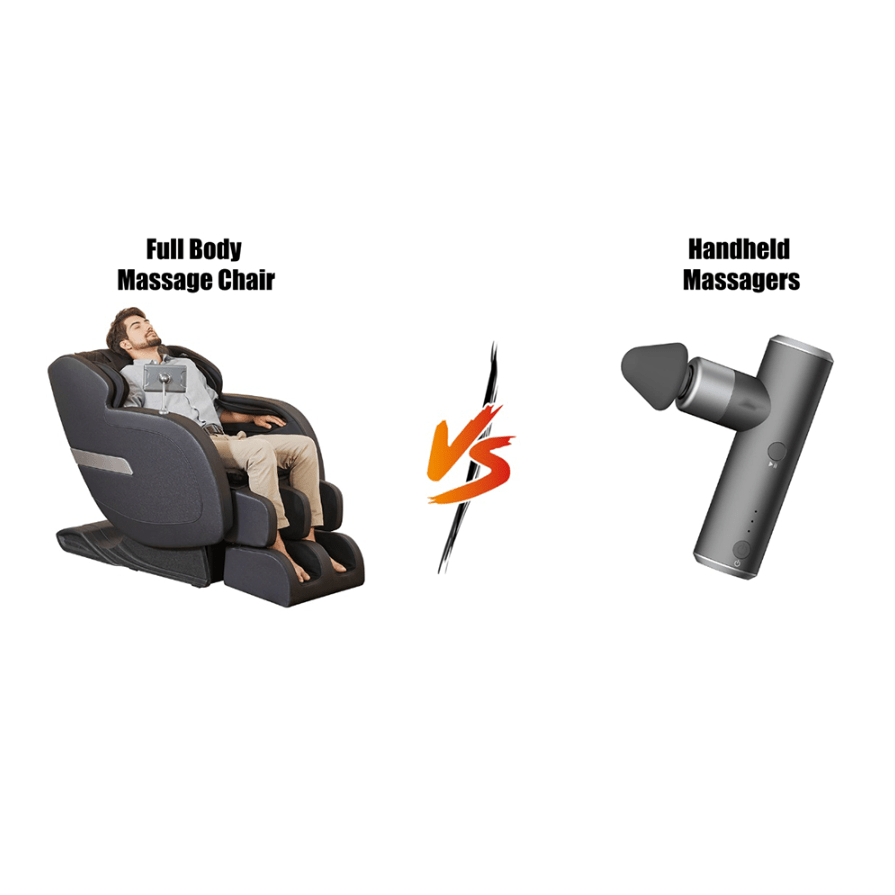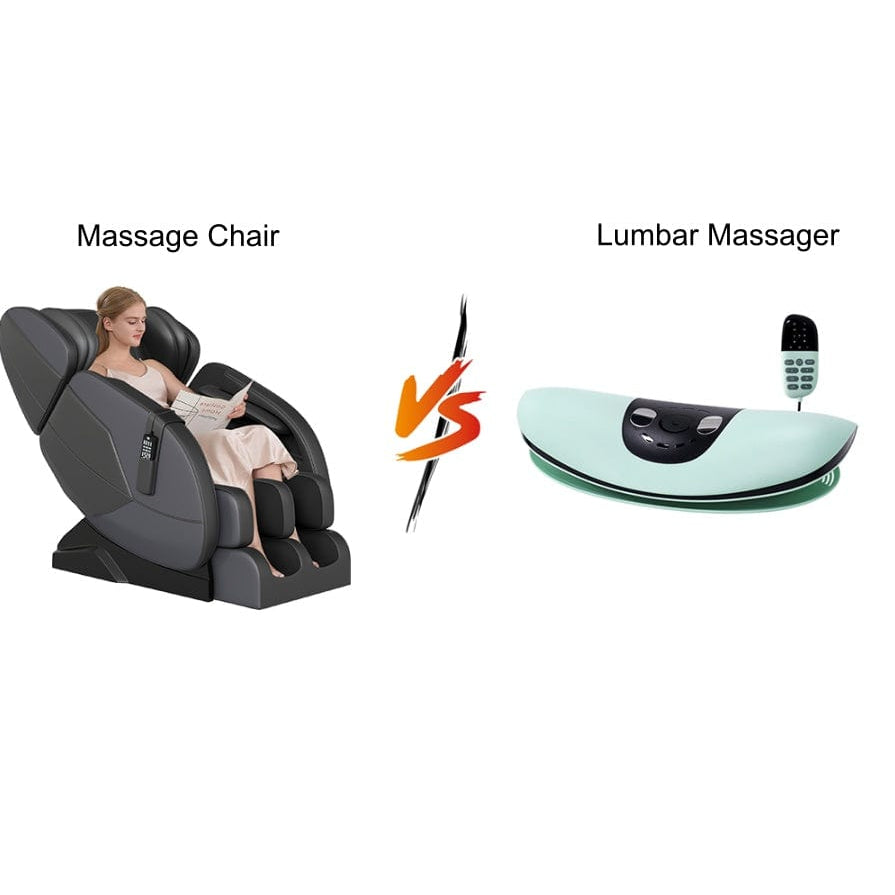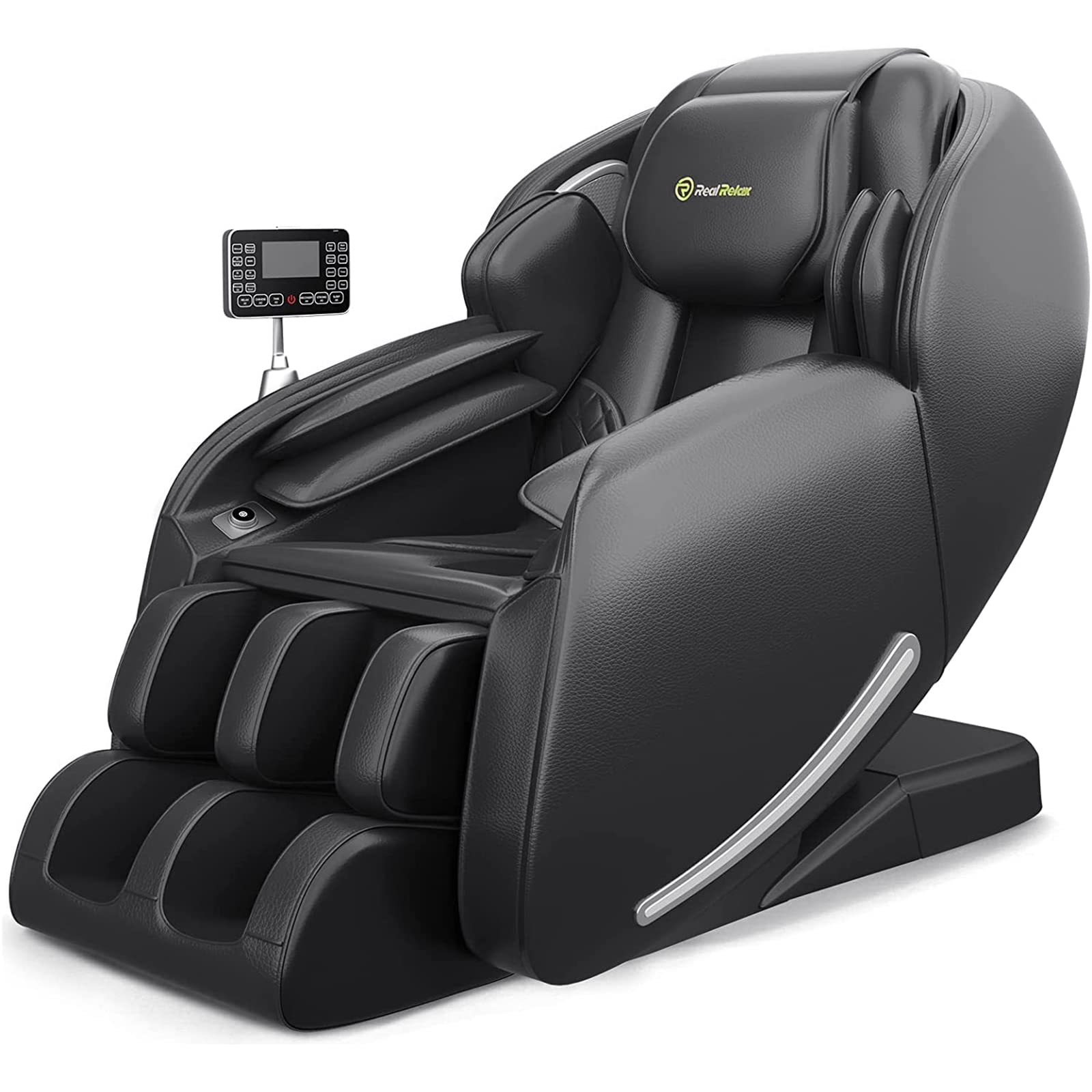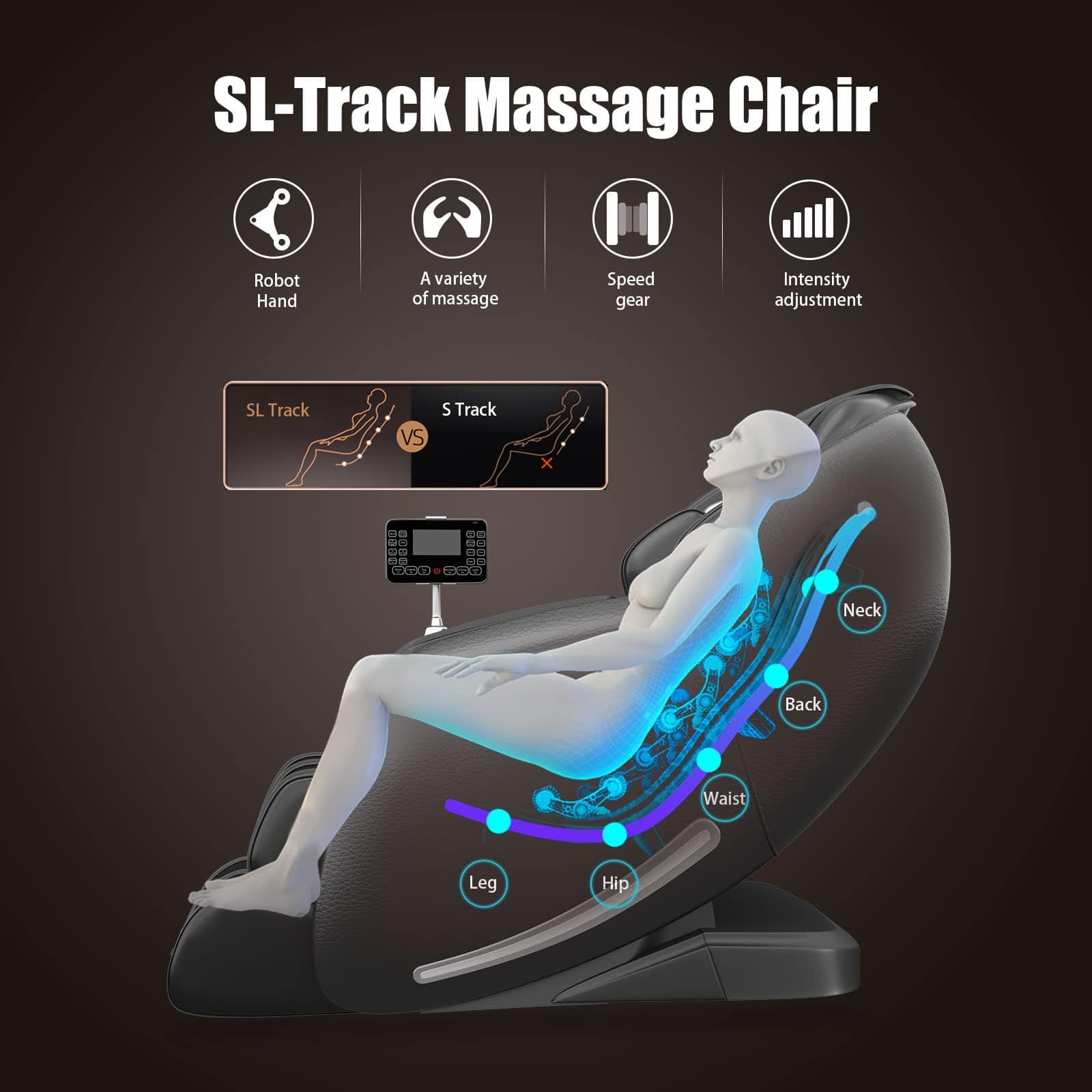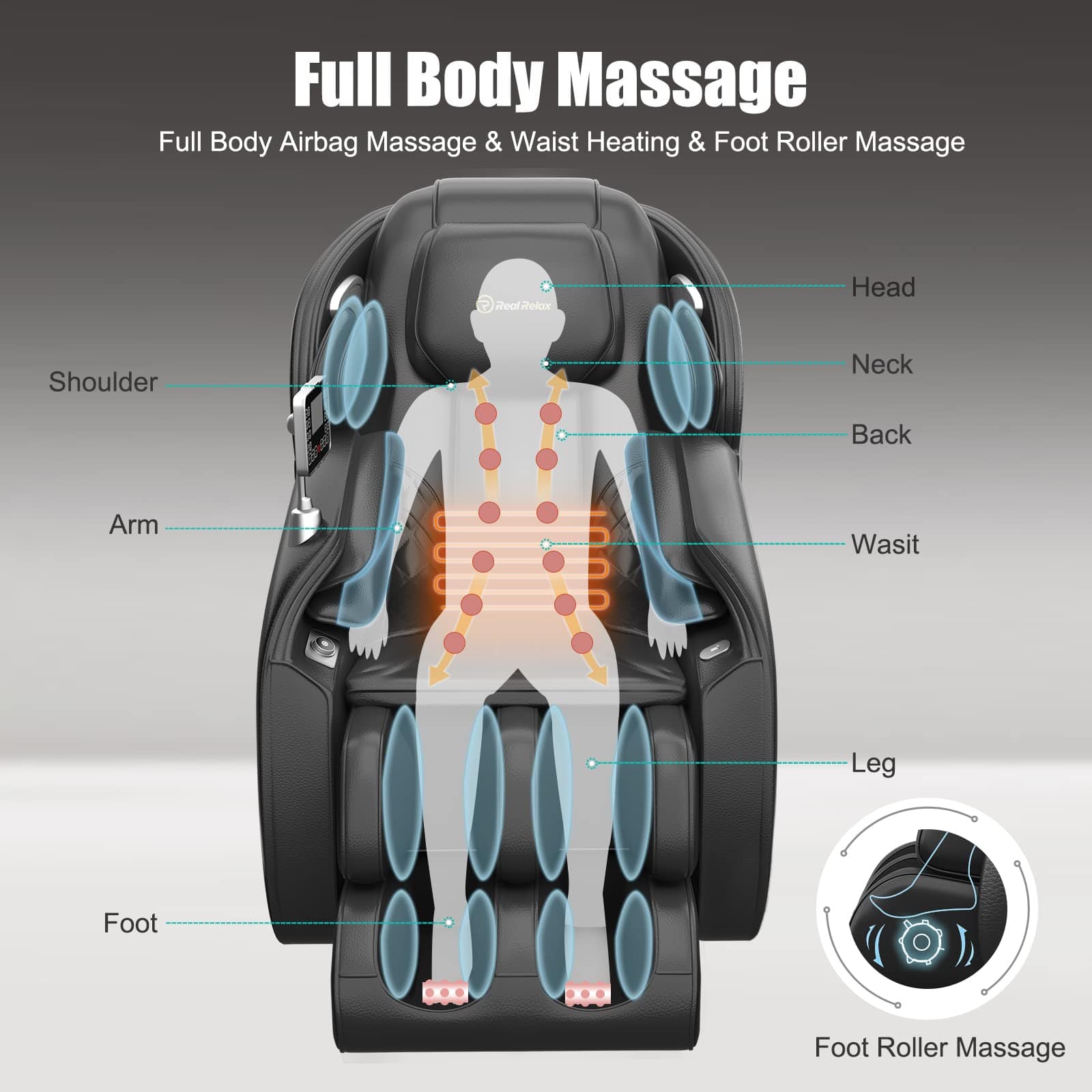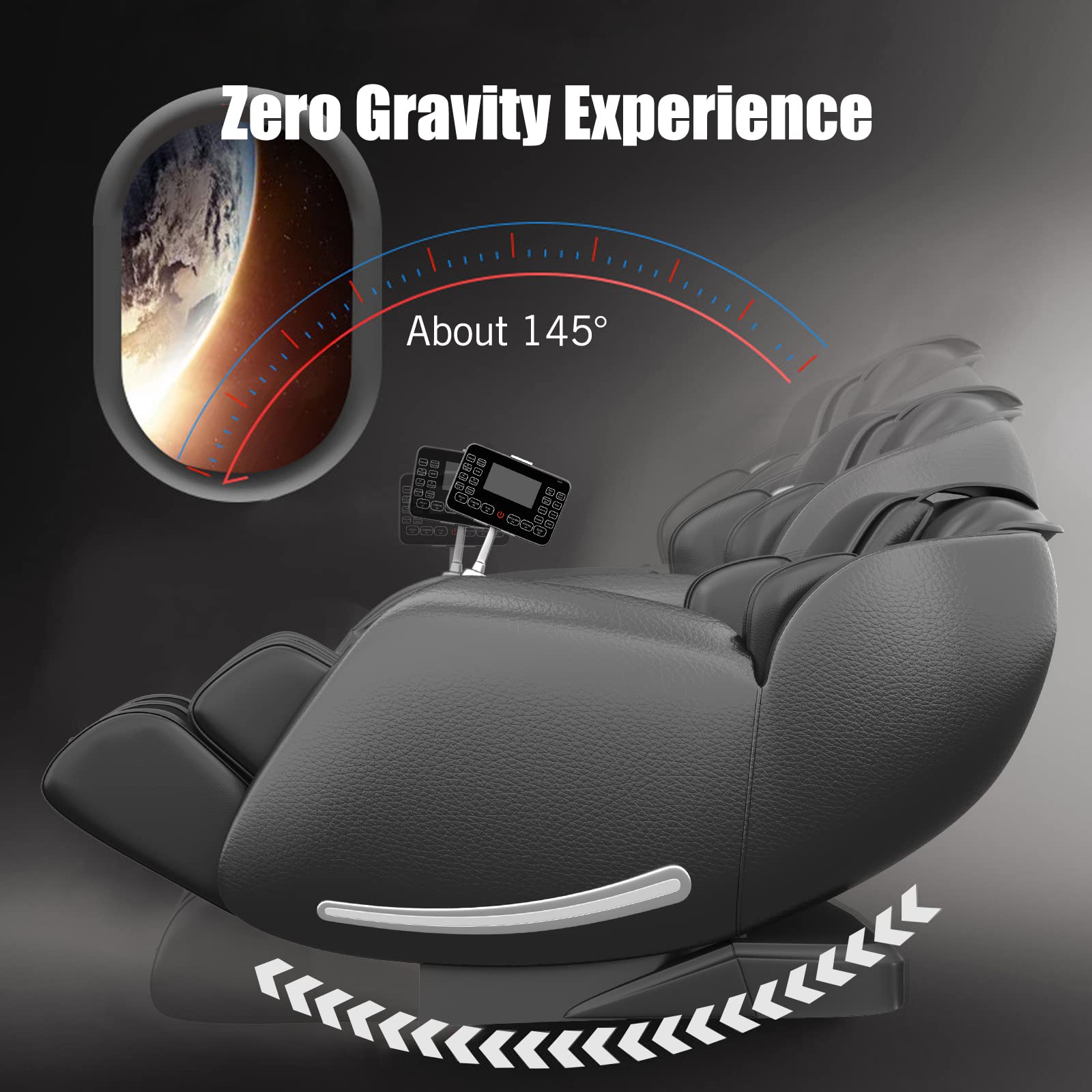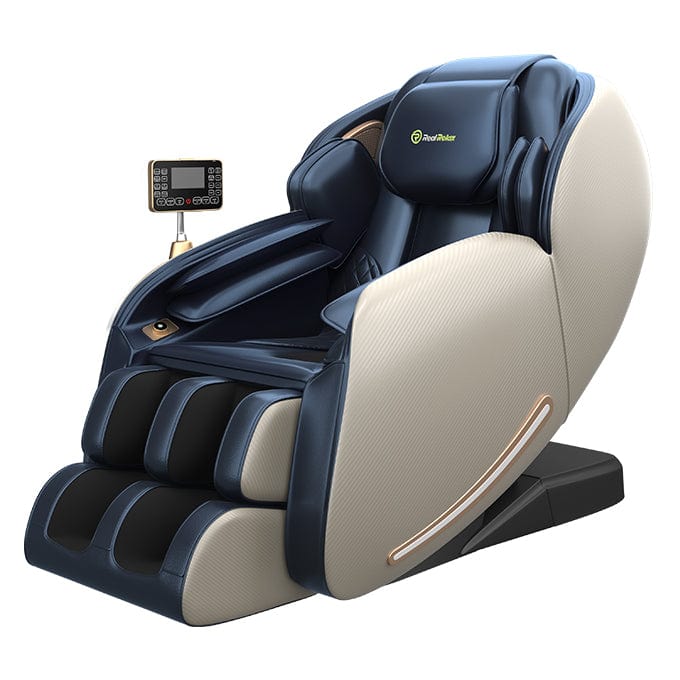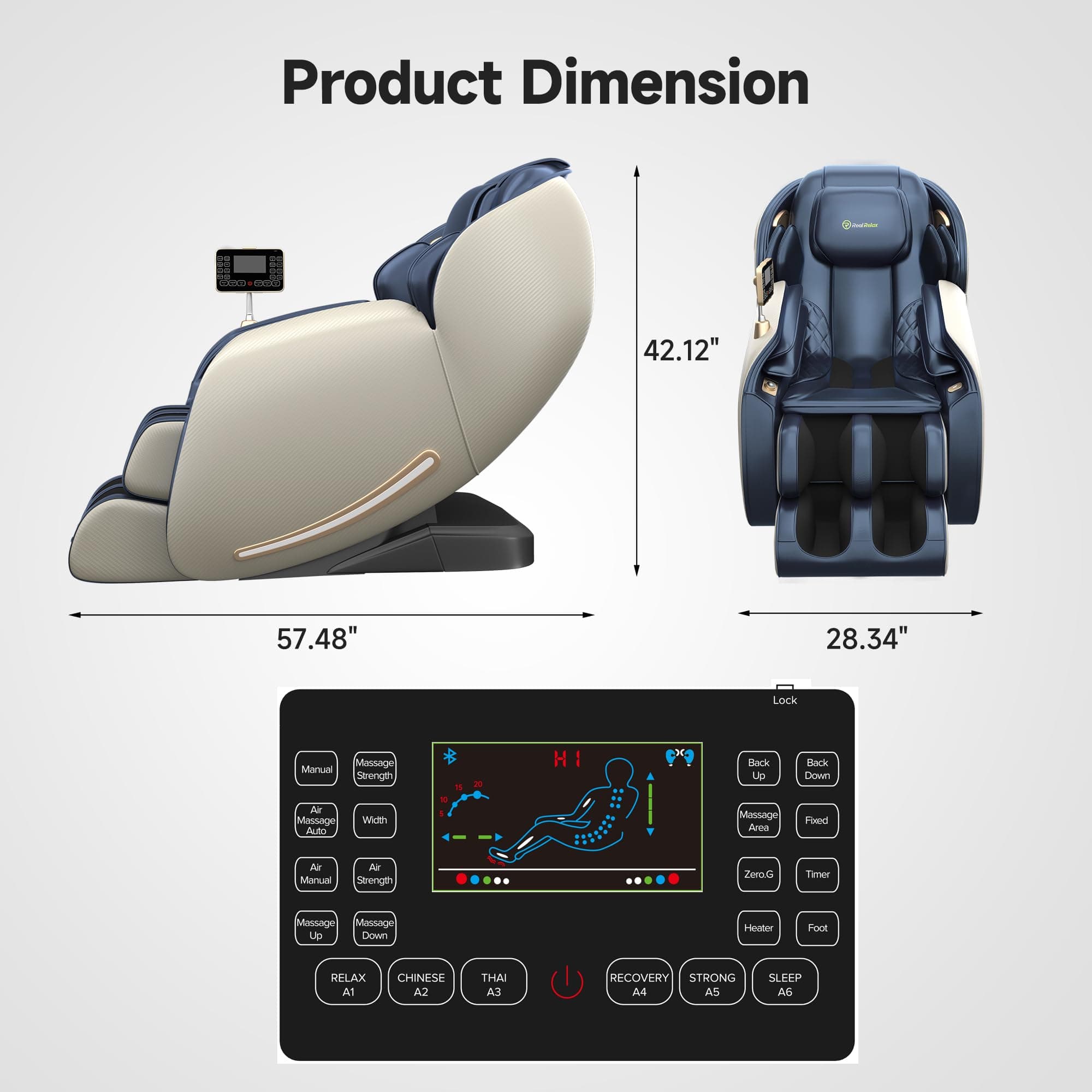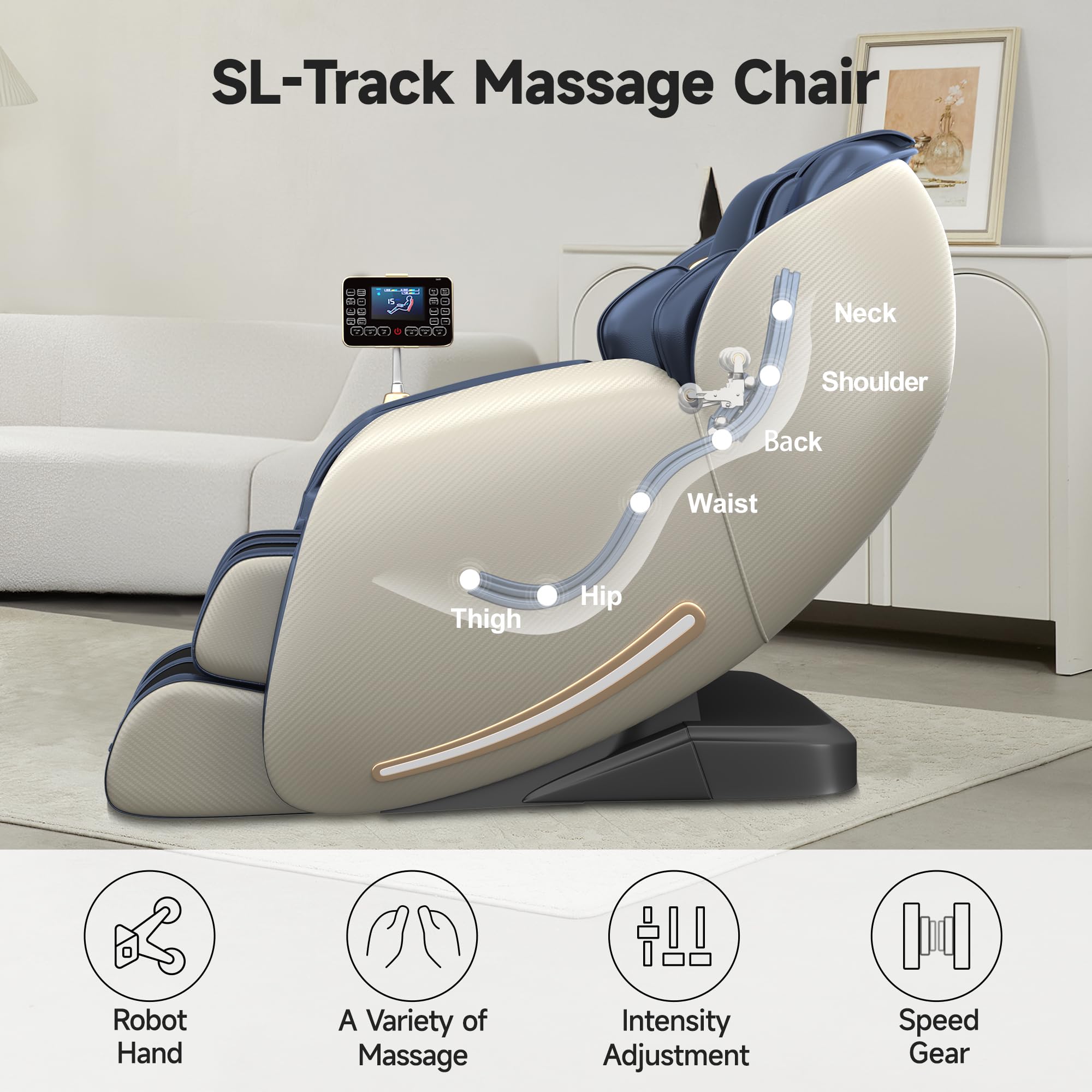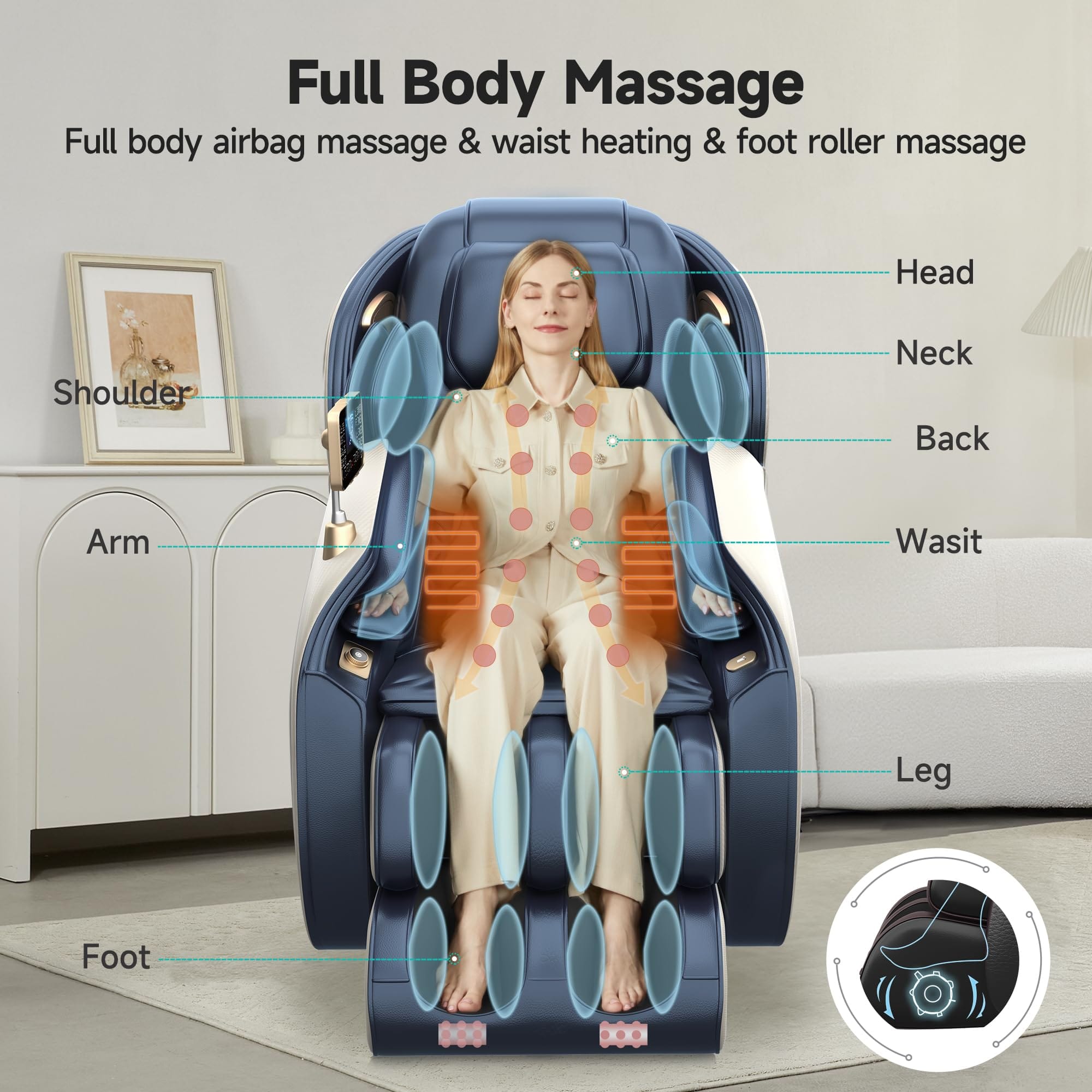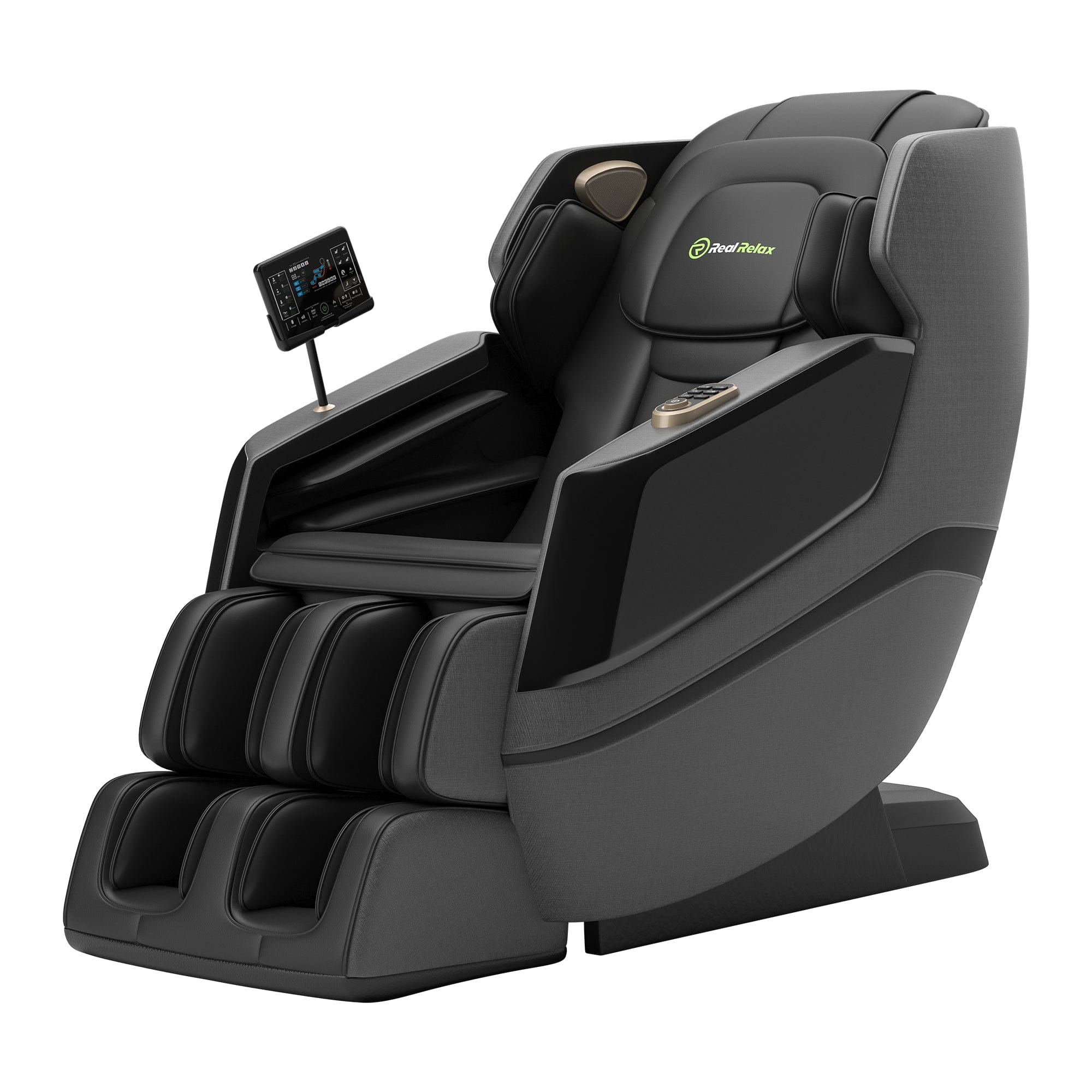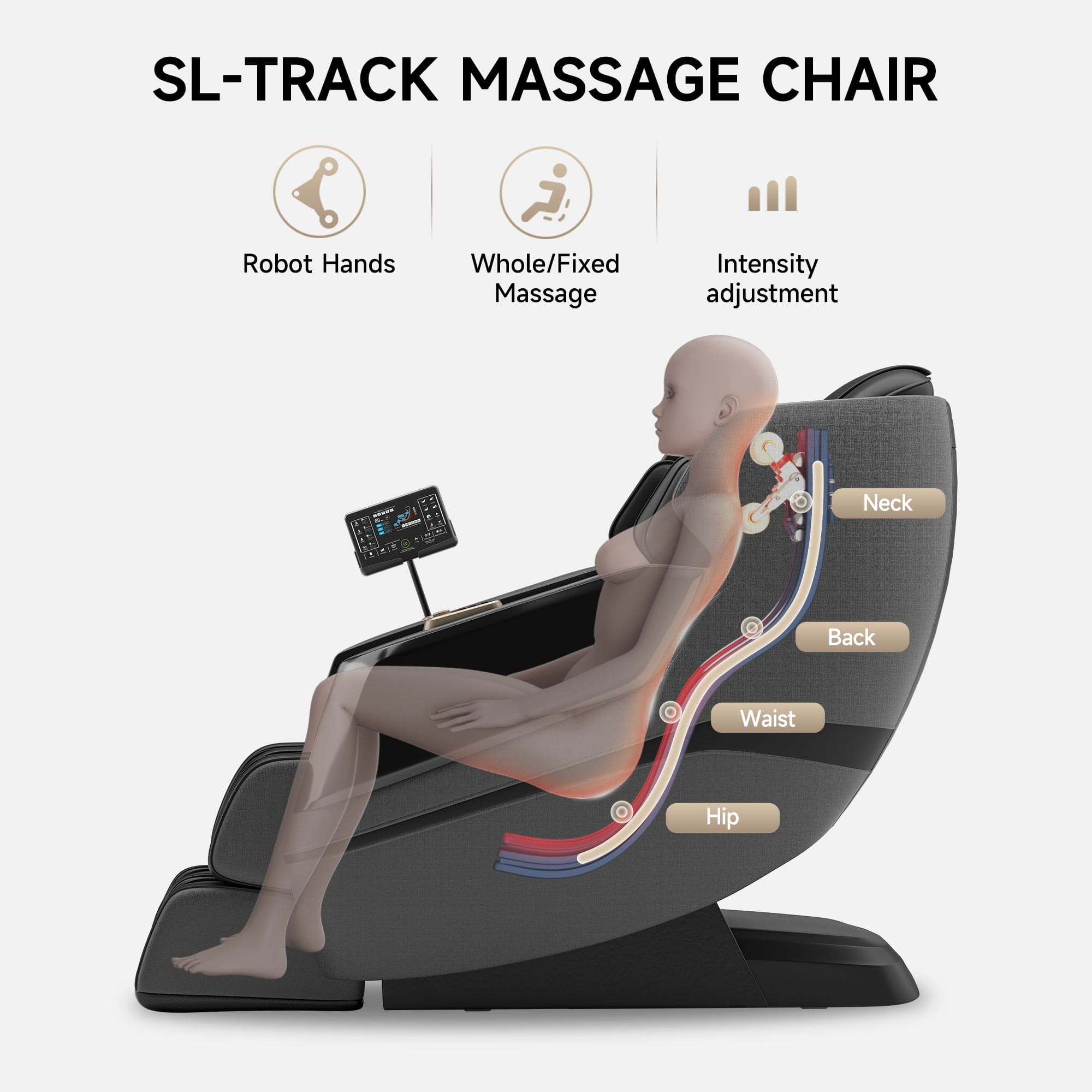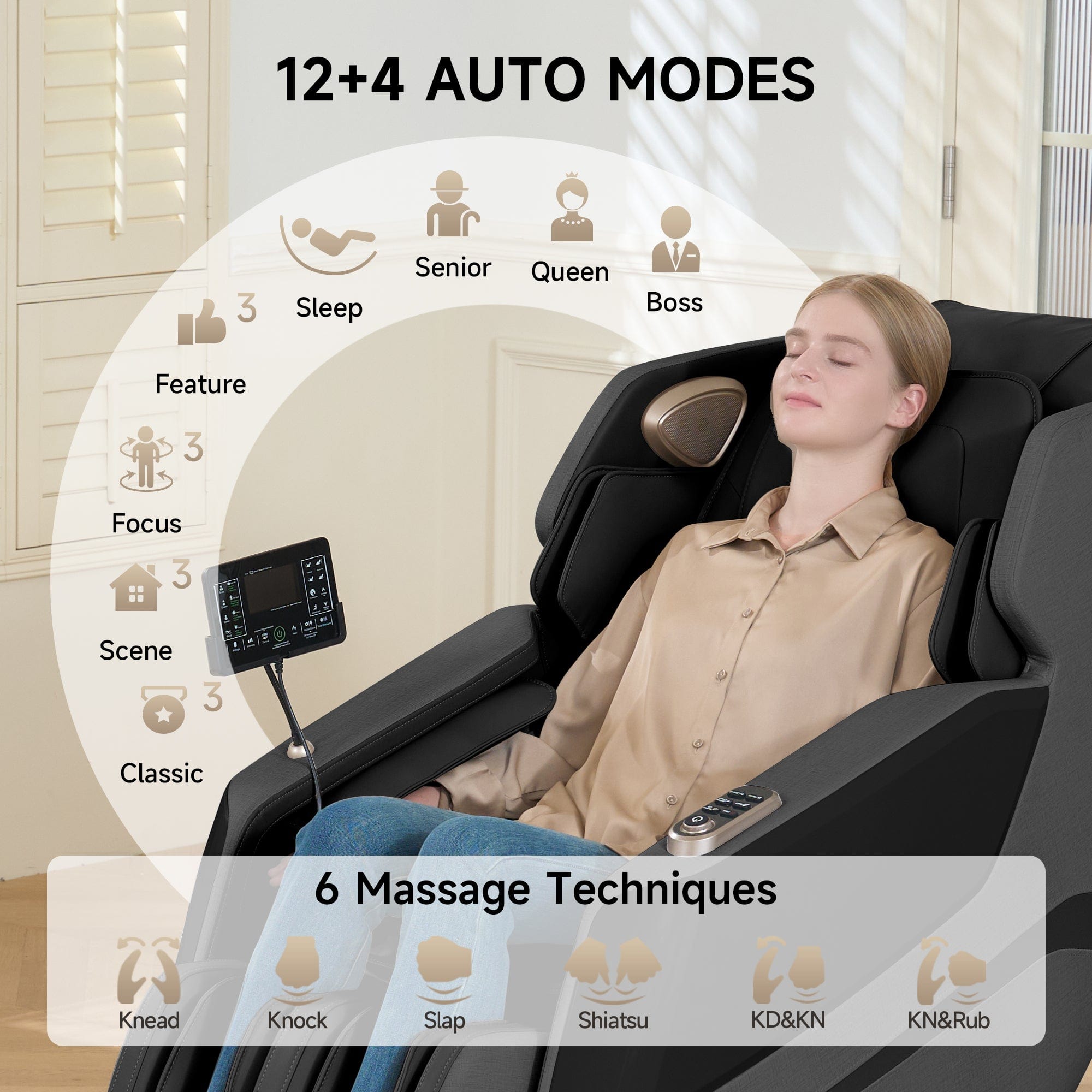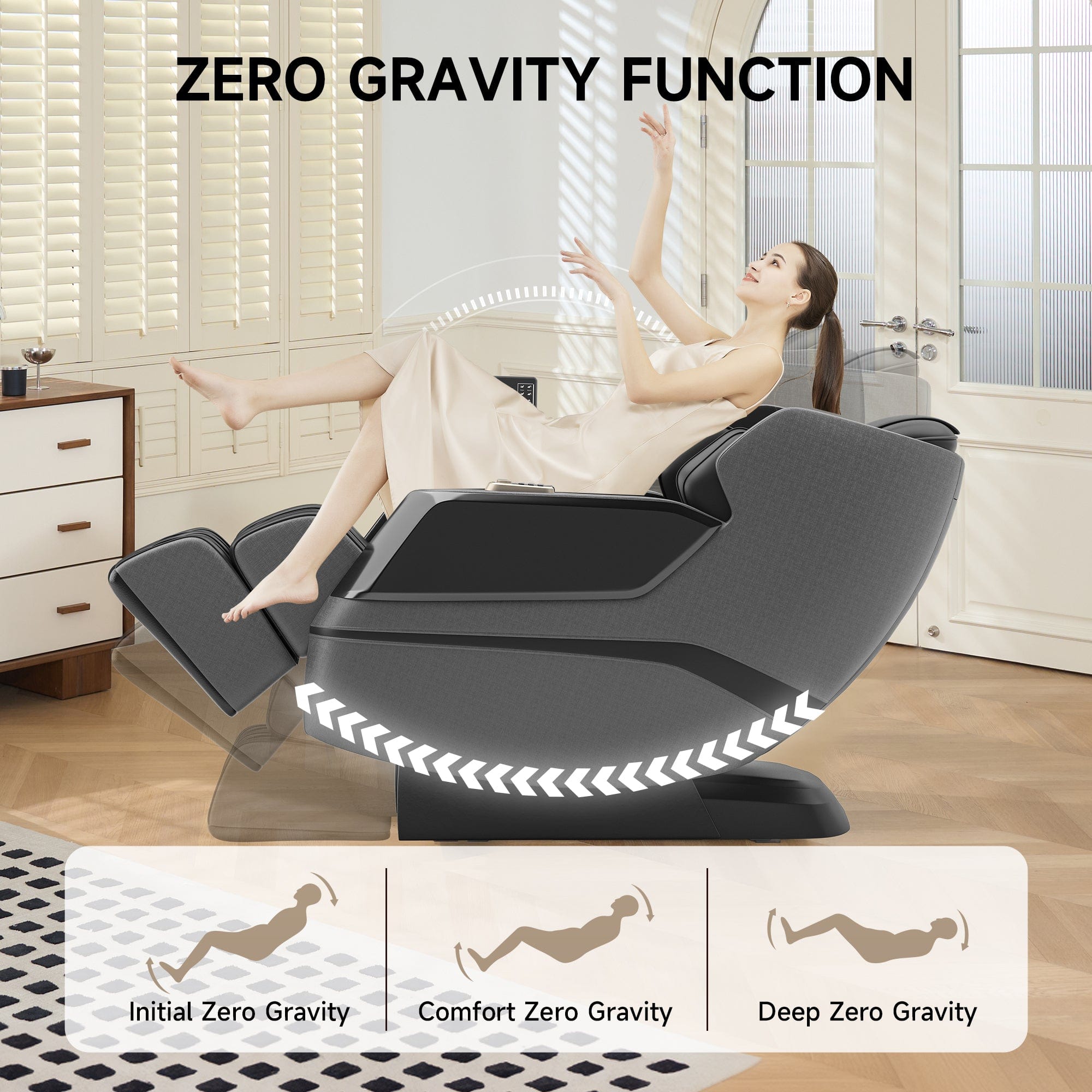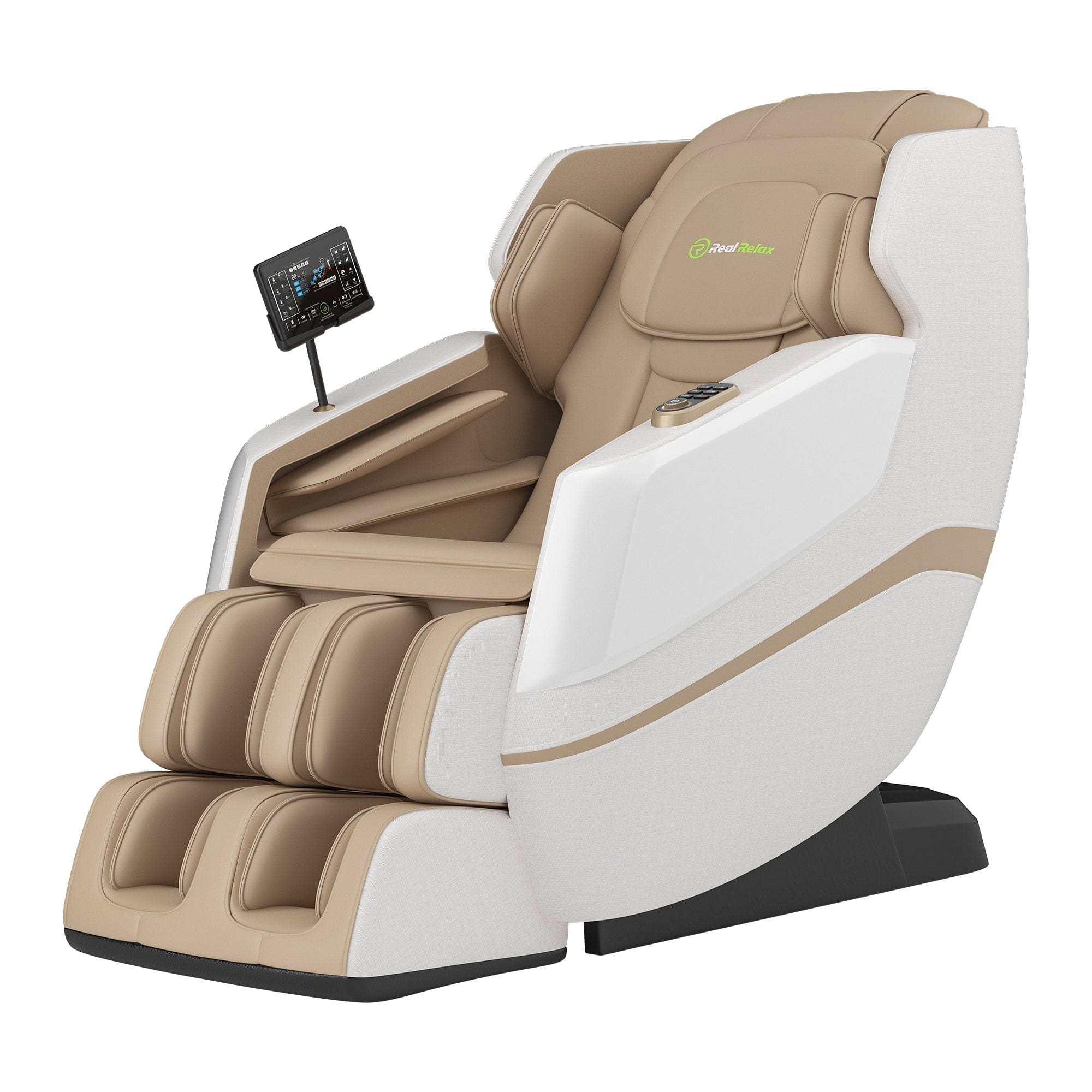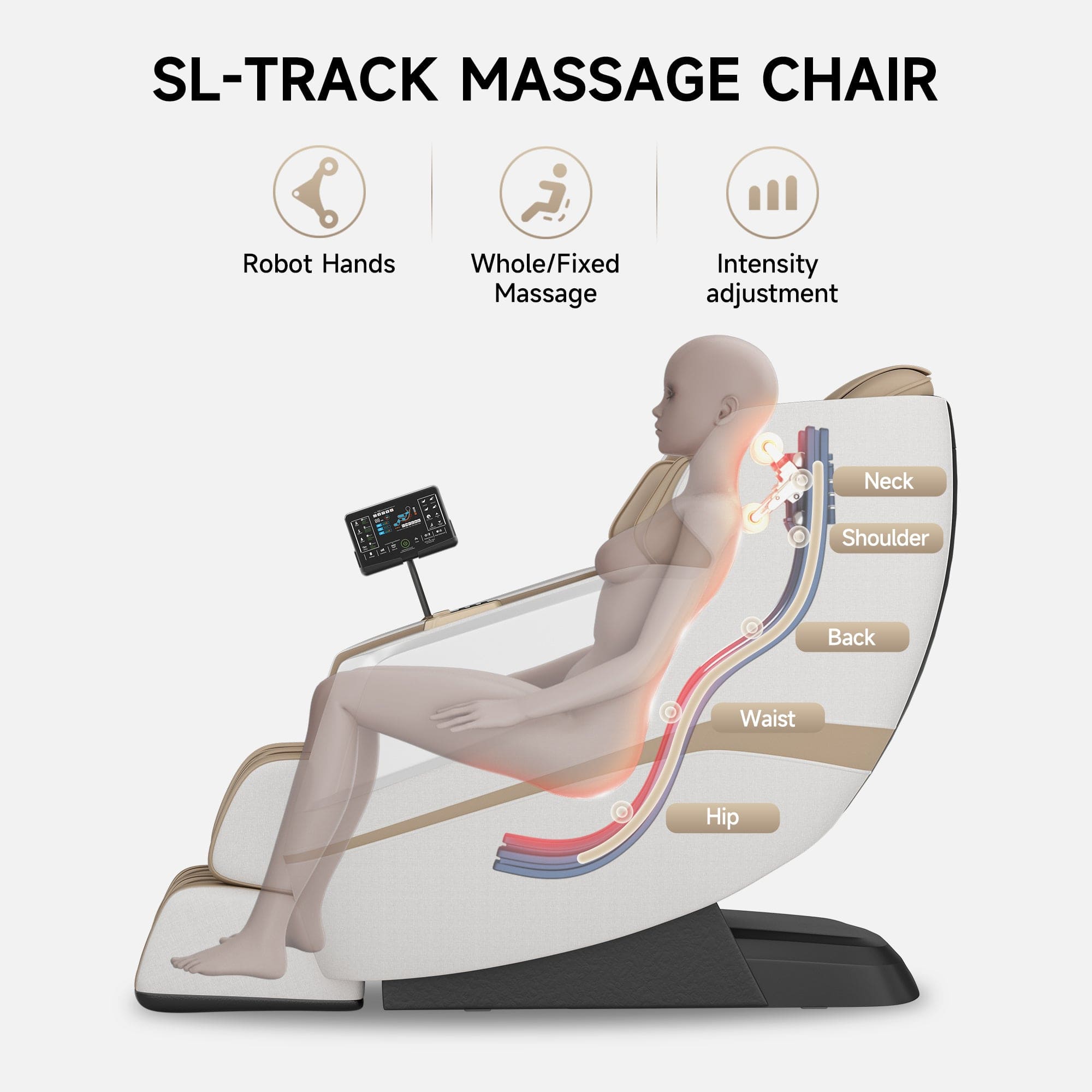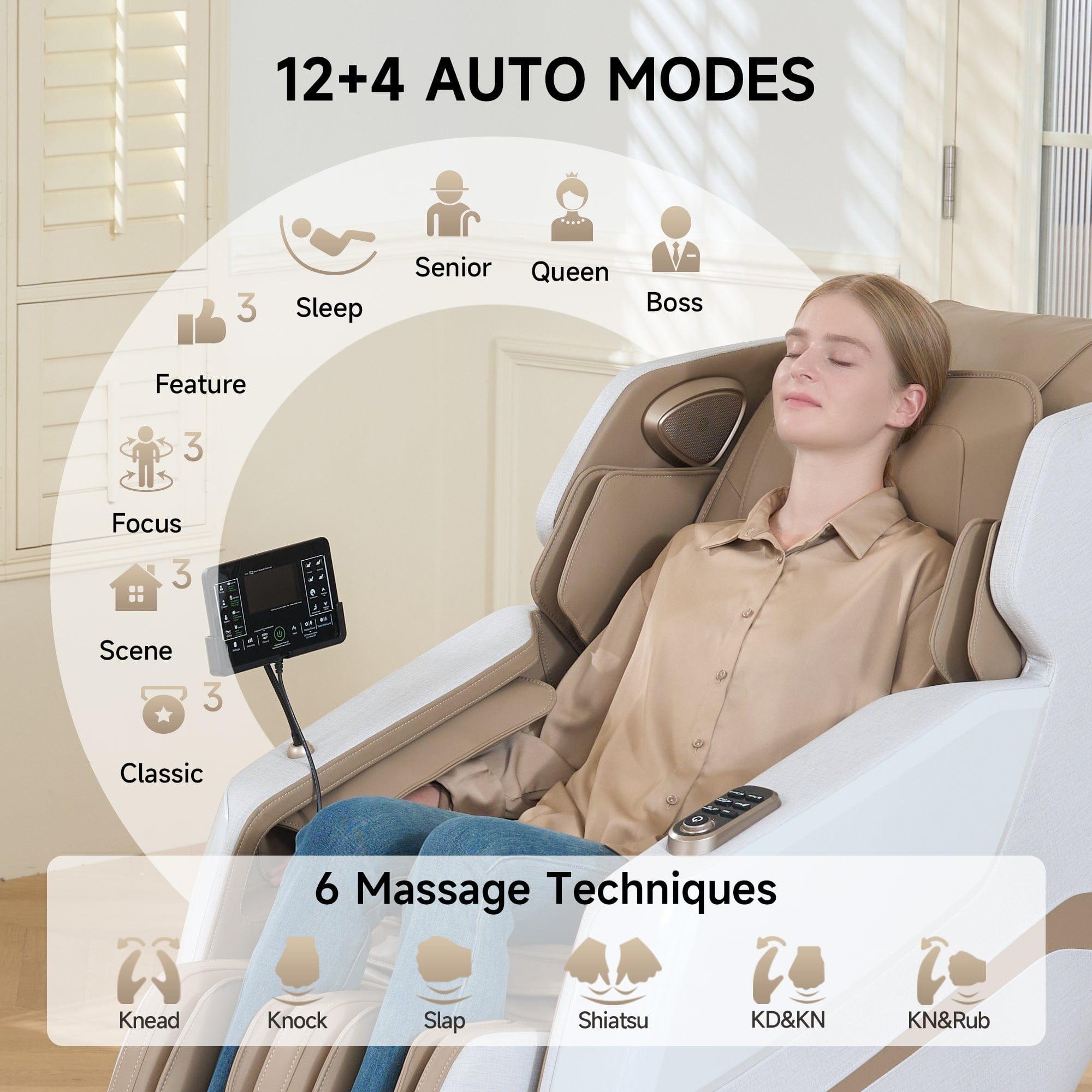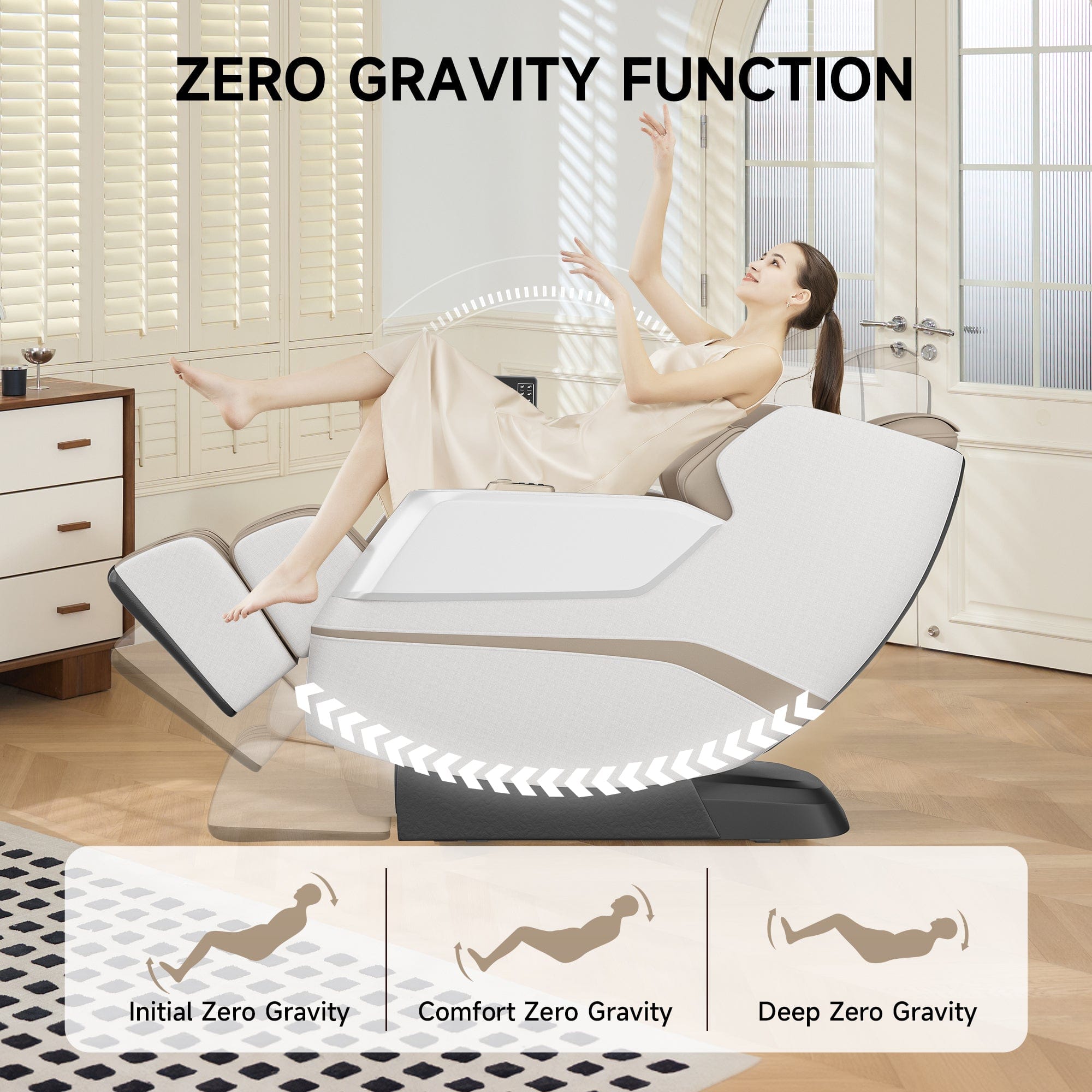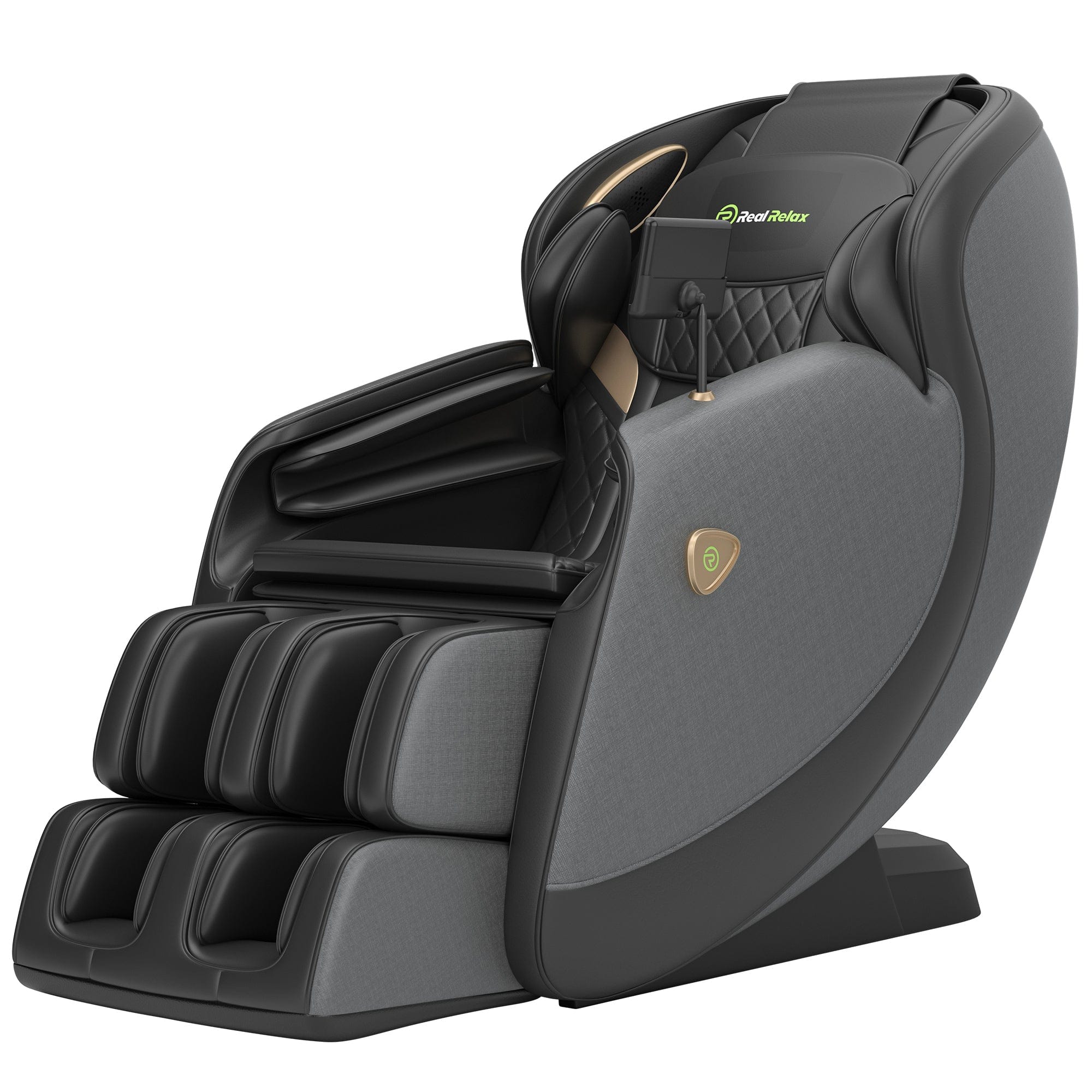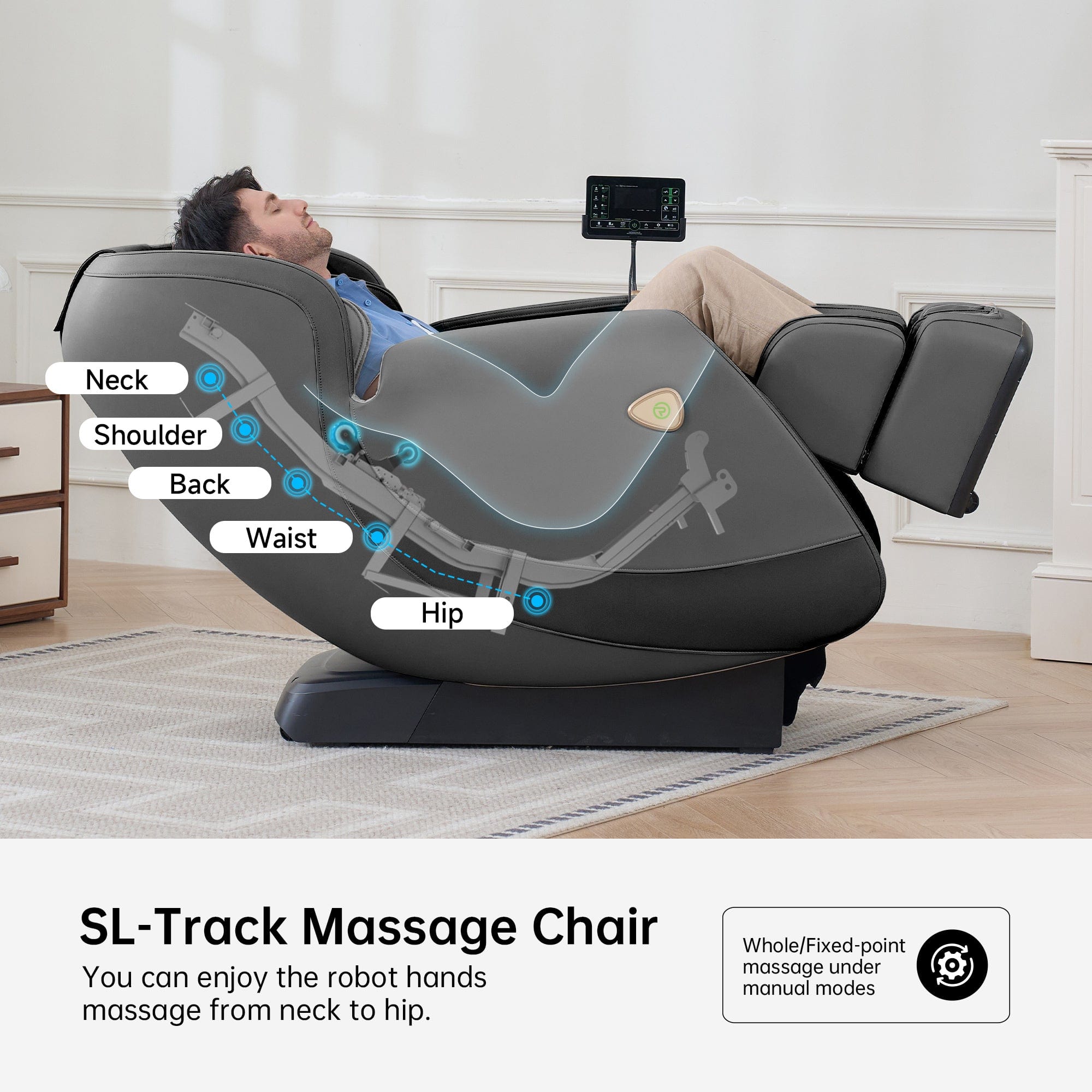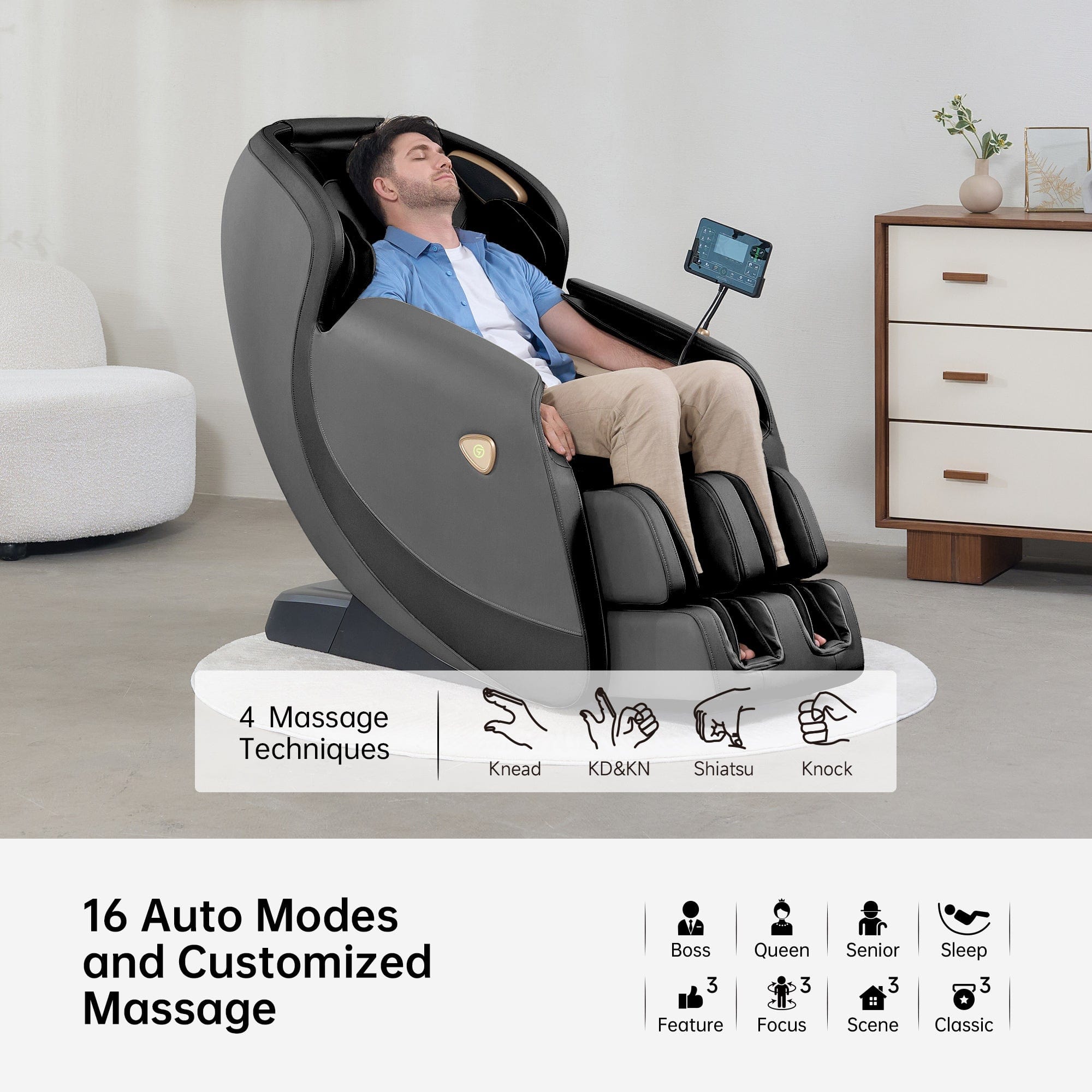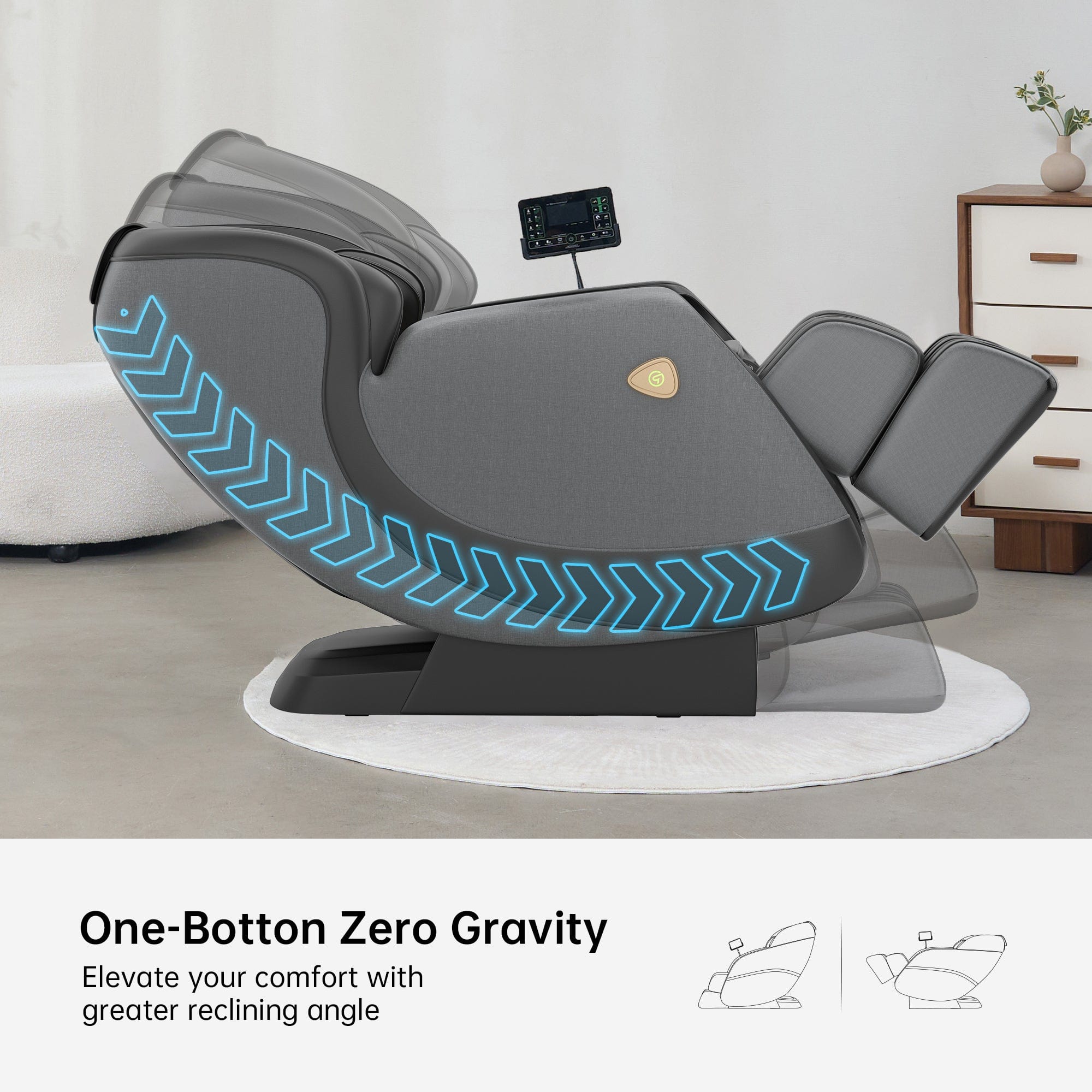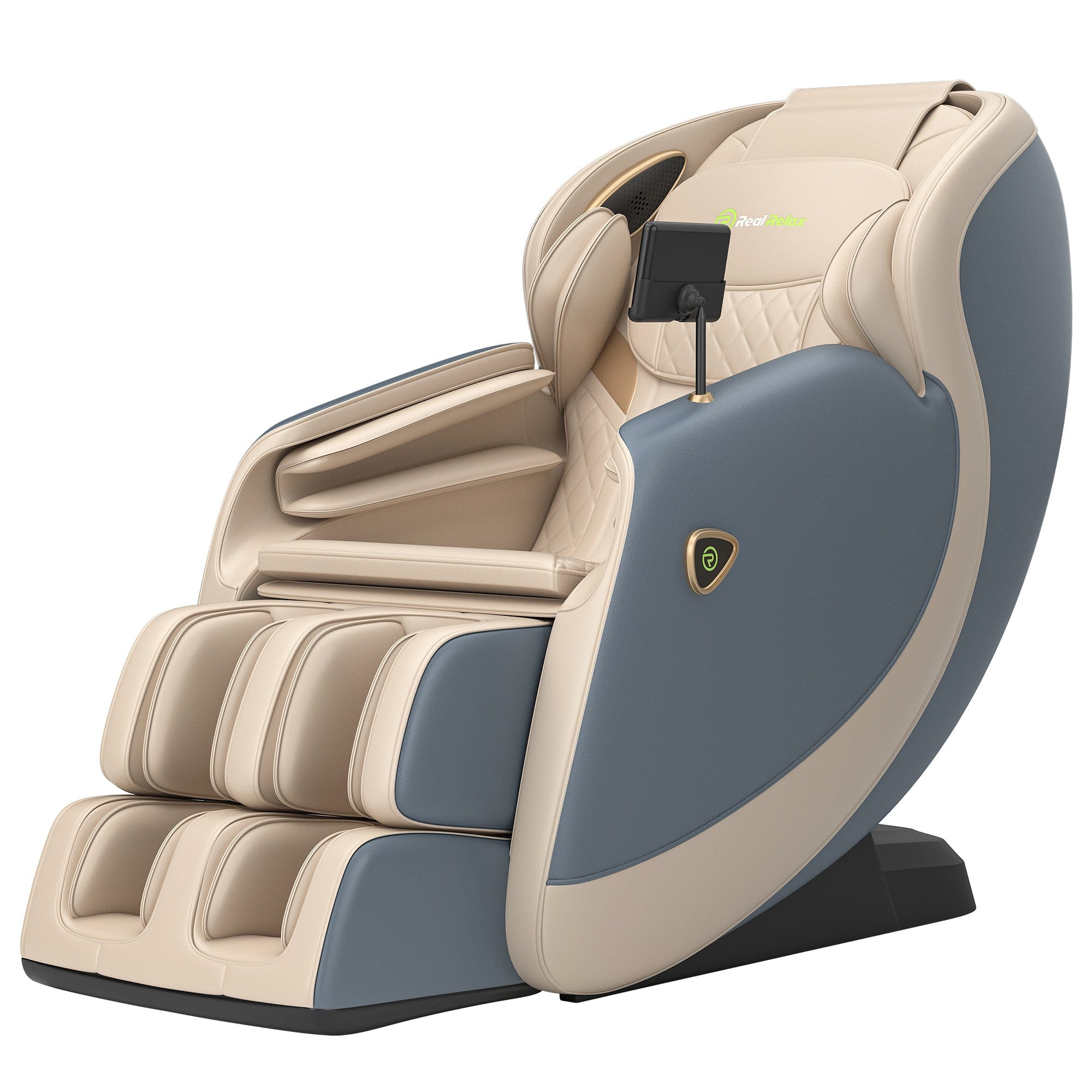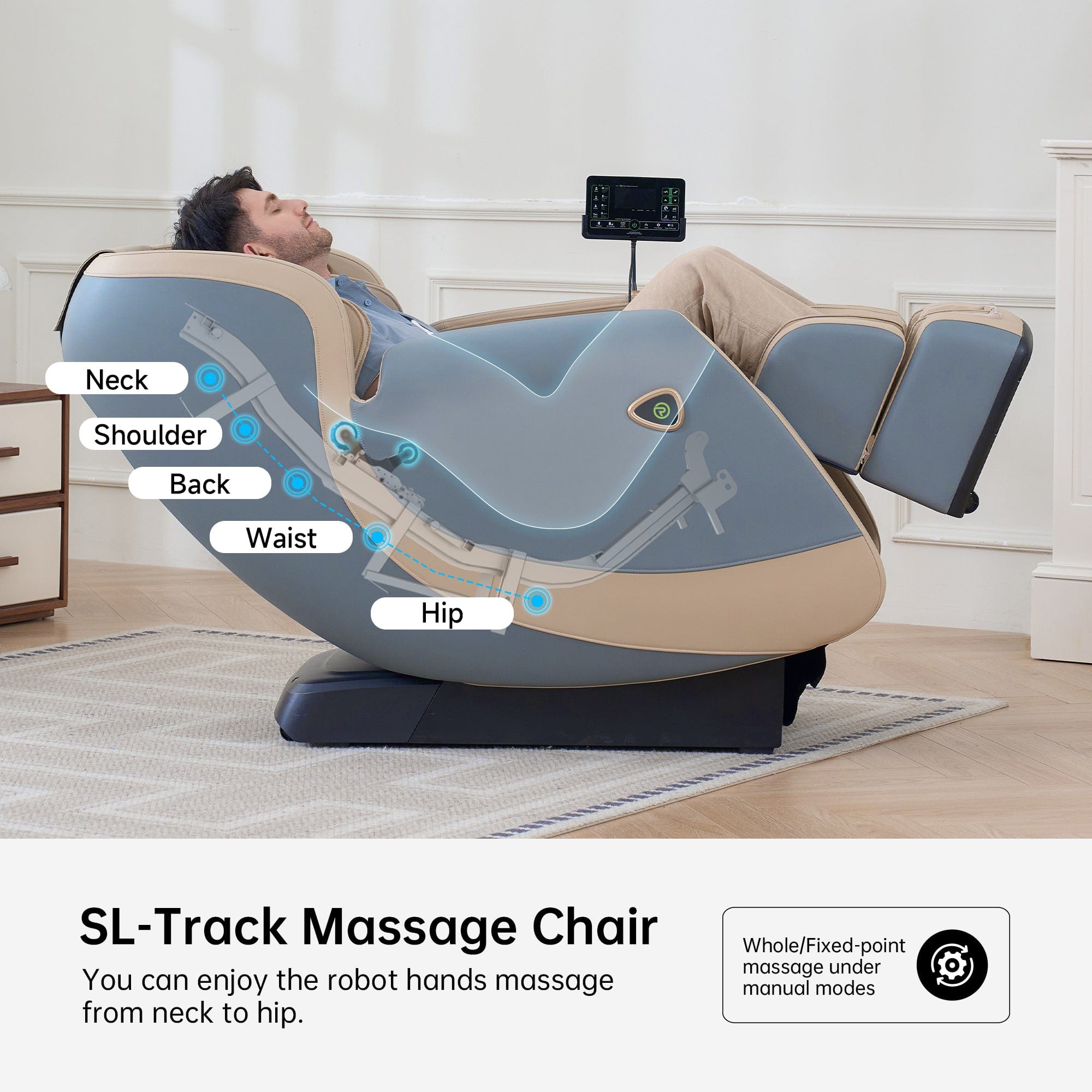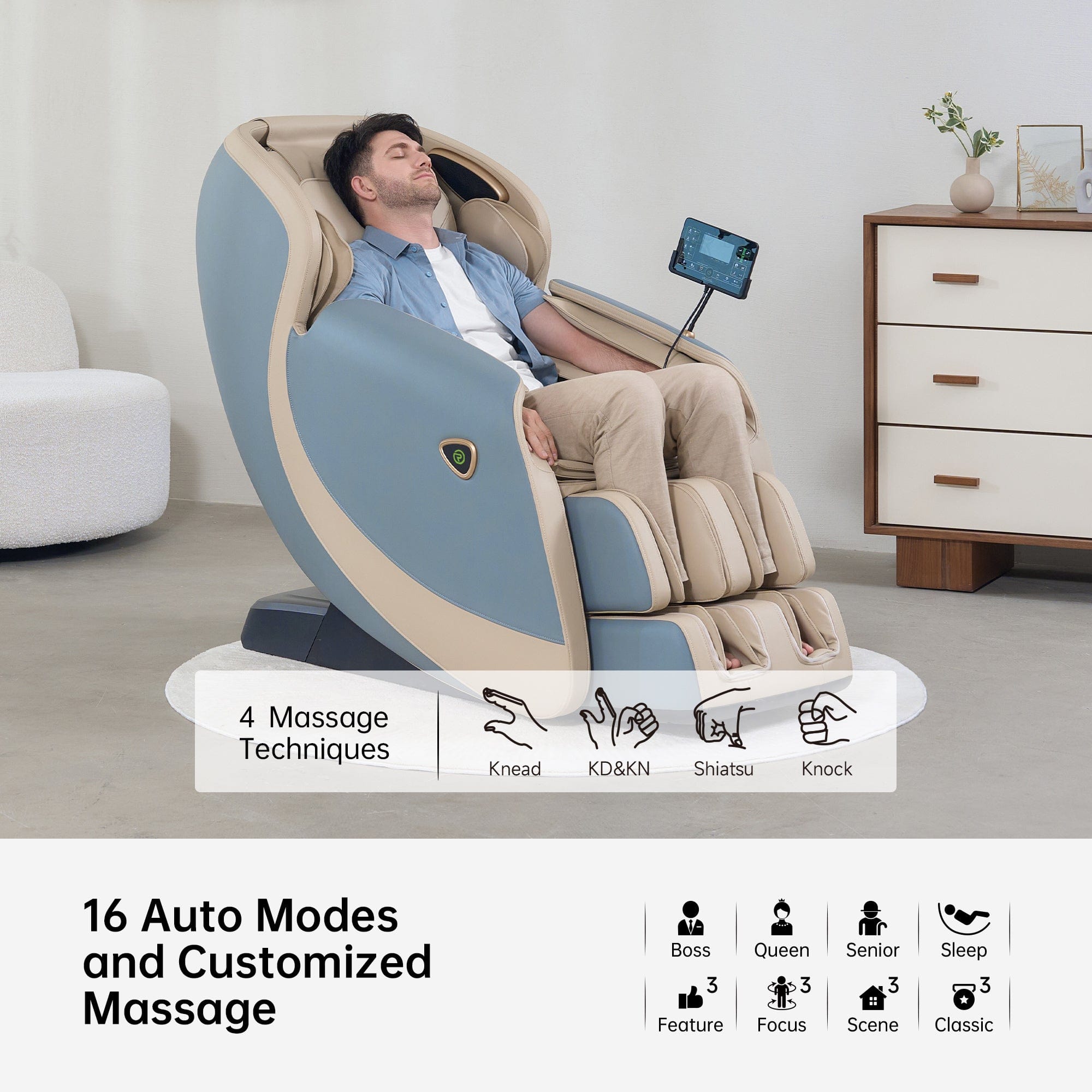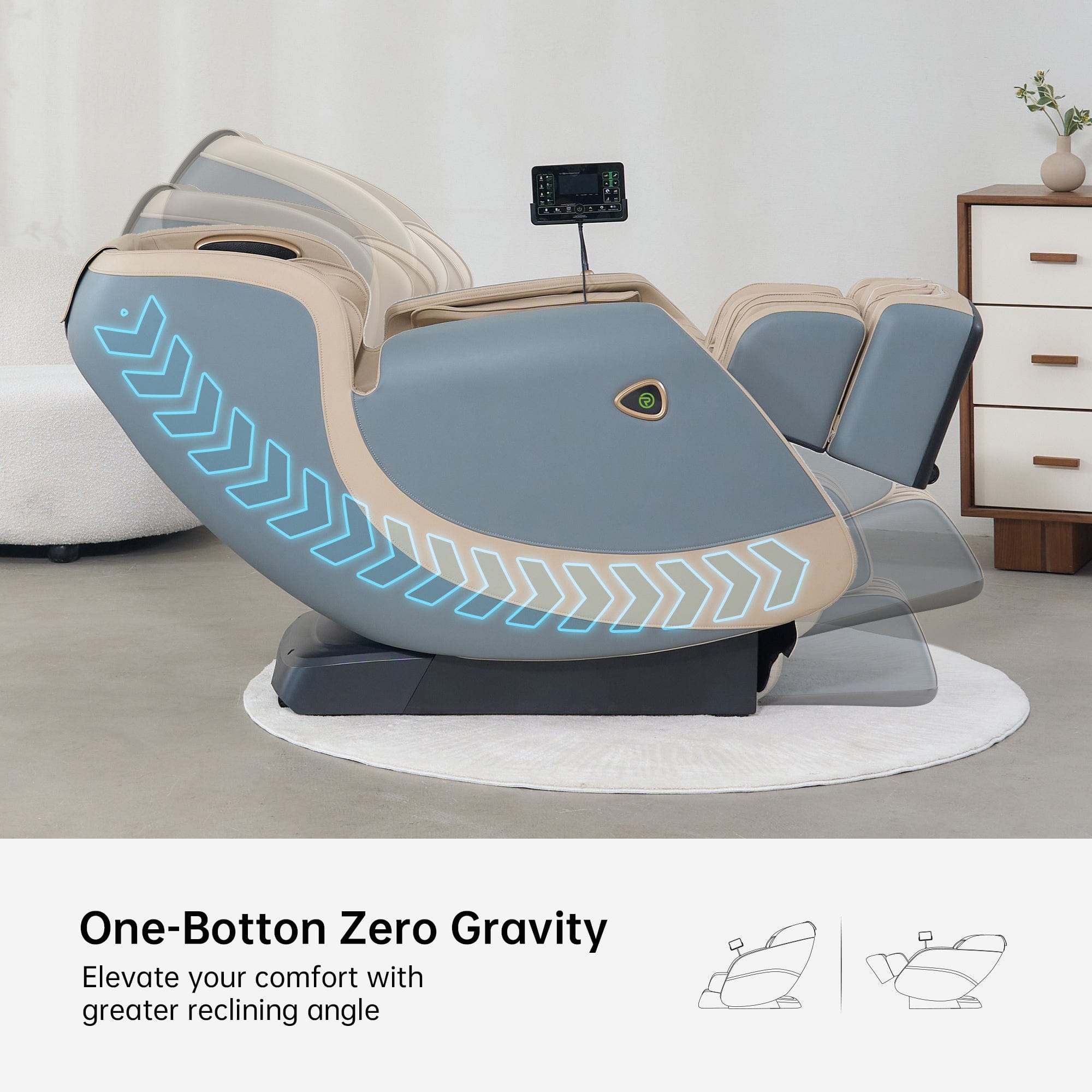If you’ve been battling chronic pain, you know how much it can mess with your day-to-day life. Muscle aches, tightness and lingering soreness aren’t just uncomfortable—they can drain your energy and mood. So, it’s no wonder that people are turning to massage tools to ease the tension. Two of the most popular options? Massage chairs and massage guns. But which one really gives you the relief you’re hoping for? Let’s put it in a way that’s simple, relatable, and actually useful.
Full Body Comfort vs. Targeted Relief
Massage chairs are kind of like having a personal masseuse ready whenever you need. They’re built to cover your whole body: back, neck, shoulders, legs, sometimes even your feet. Many models offer features like heat therapy, zero-gravity positioning, and rollers that mimic human hands. This combination can do wonders for loosening up tight muscles, improving circulation, and easing that nagging tension that comes with chronic pain.
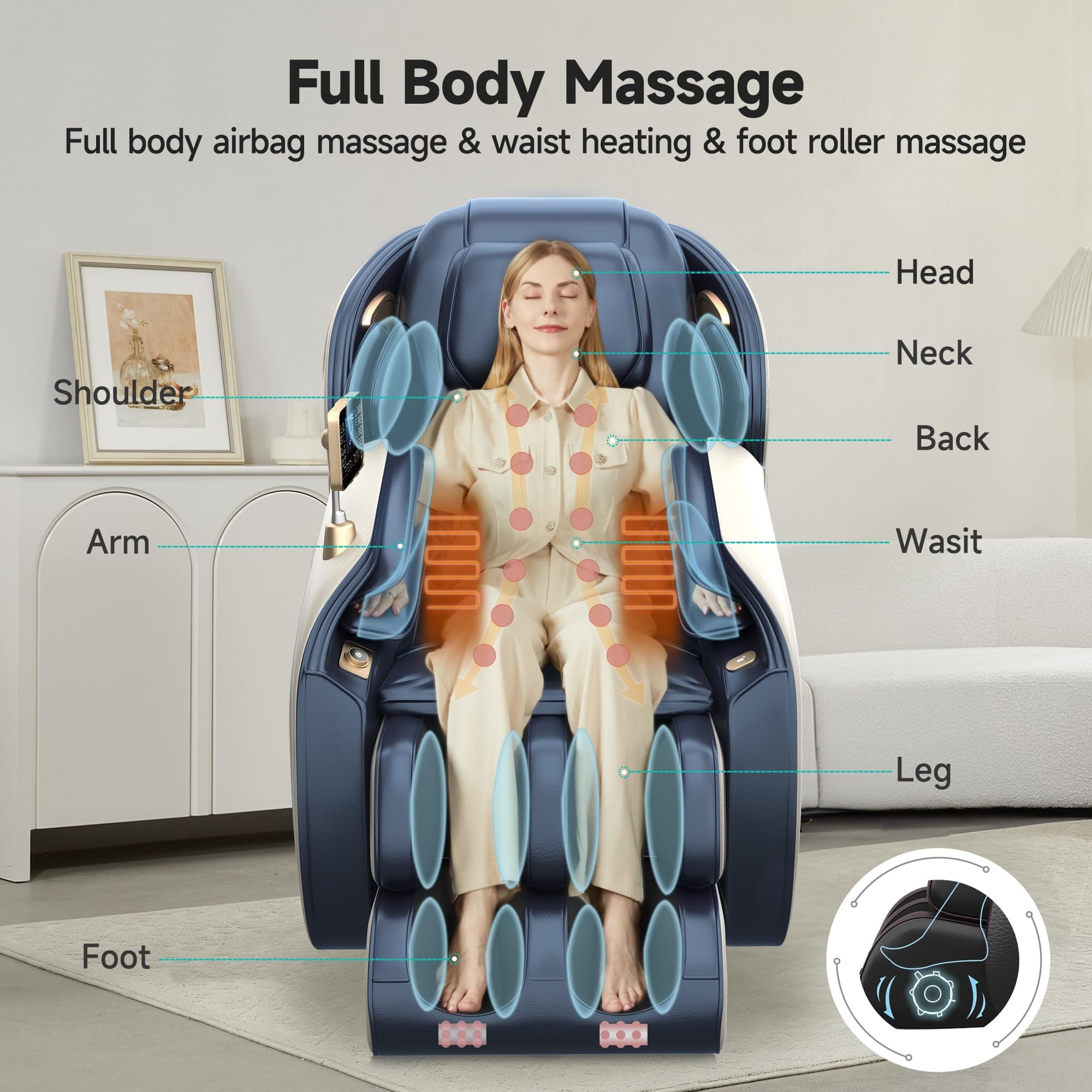
Real Relax Favor-06 3D massage chair for full body massage
On the flip side, massage guns are like the precision tool in your toolkit. They’re designed to hit specific sore spots—think knots in your shoulders or calves that just won’t relax. They’re portable, easy to use, and come with different attachments so you can dial in the intensity. But because they focus on one area at a time, they won’t give you that full-body unwind that a massage chair provides.
How massage guns works
Daily Use and Consistency
One of the big advantages of a massage chair is that it’s sitting there in your living room, ready whenever you are. For chronic pain, consistency matters. Using a chair a few minutes every day can help manage muscle tightness, reduce stress and even improve your sleep.
Massage guns, however, require a bit more intention. You have to target the right area, apply the right pressure, and be careful not to overdo it. If you’re someone who forgets to use them or tends to overapply pressure, they might not give you the consistent relief you need.
Safety and Ease of Use
Massage chairs are generally very safe. You sit back, press a button, and let the chair work its magic. Some chairs have adjustable intensity, so you can go gentle or deep depending on your comfort level.
Massage guns, while effective, can be tricky. Applying too much pressure, especially on sensitive areas like the neck, can cause bruising or even nerve irritation. You have to know what you’re doing, which isn’t always easy if you’re just trying to relax after a long day.
Different massage machanism for 2D, 3D, 4D Real Relax massage chairs to make you relax
Cost and Convenience
Here’s the obvious difference: massage chairs cost more and take up a chunk of space in your home. They’re an investment, but for chronic pain sufferers, the benefits can outweigh the cost if you use them regularly.
Massage guns are much more affordable and portable. You can toss one in your bag, take it to the office, or use it while traveling. They’re convenient and effective for targeted relief, but if you’re after a long, full-body massage experience, they’re not a substitute for a chair.
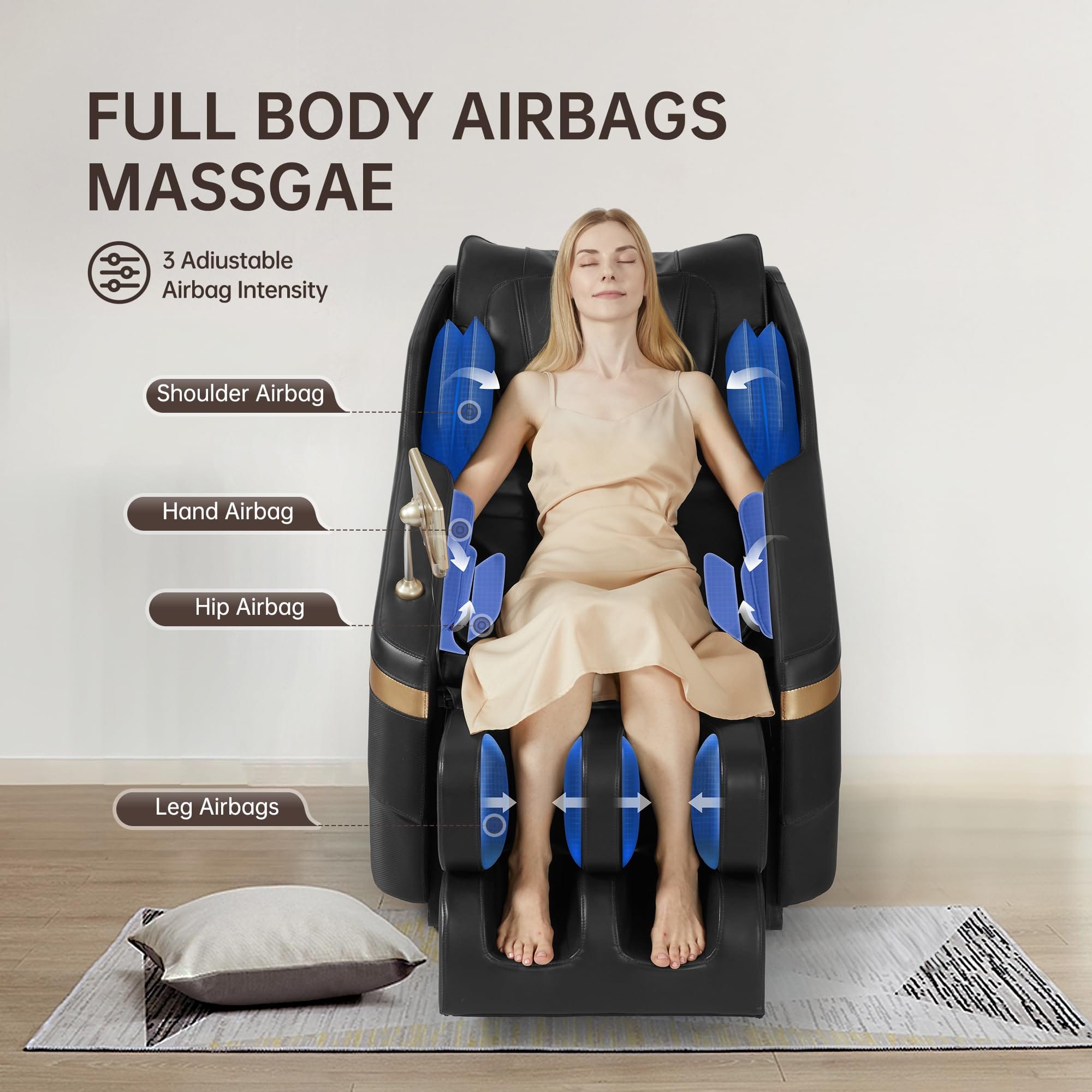
Enjoy full body massage chair under $1000
Combining Both for Maximum Relief
Some people find that using both a massage chair and a massage gun works best. Start with a session in the chair to relax your muscles and reduce overall tension, then use a massage gun on those stubborn knots that still feel tight. This approach can give you both full-body relaxation and pinpointed relief without overdoing it.
The bottom line is when it comes to chronic pain, there isn’t a single tool that works for everyone—but the general trend is clear. If you want consistent, full-body relief, a massage chair usually offers the bigger payoff. If you’re dealing with specific, localized pain, a massage gun can be a helpful supplement.
For people living with chronic pain, both tools have their place. The key is understanding your body, knowing where the pain hits hardest, and picking the tool—or combination of tools—that fits your lifestyle and comfort needs.



